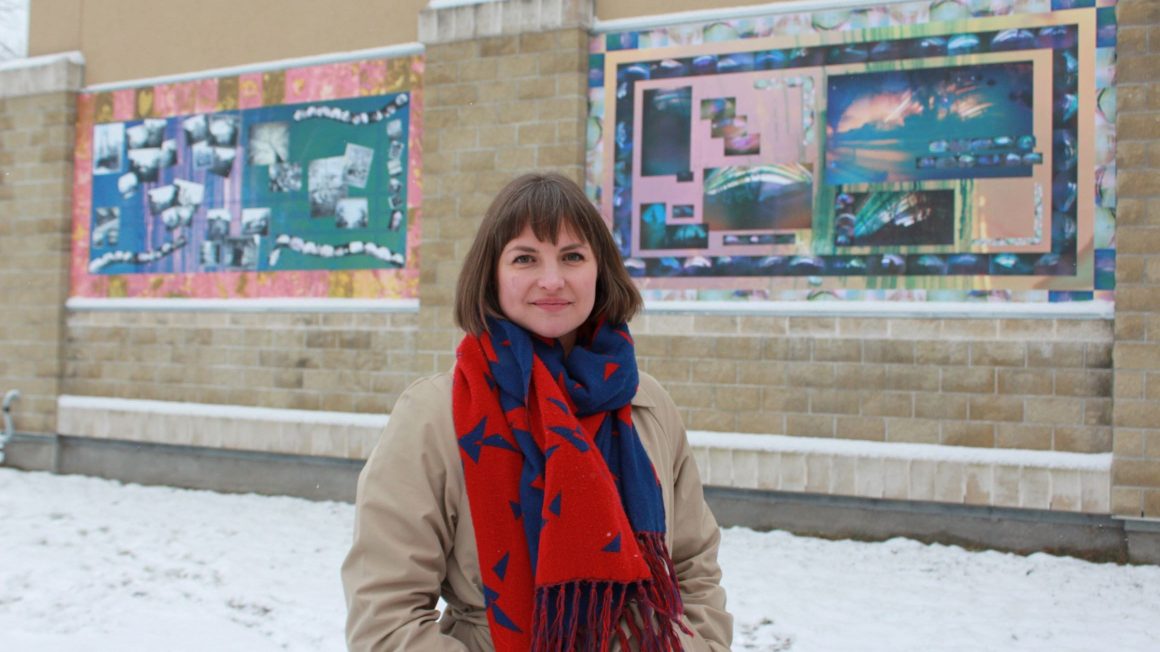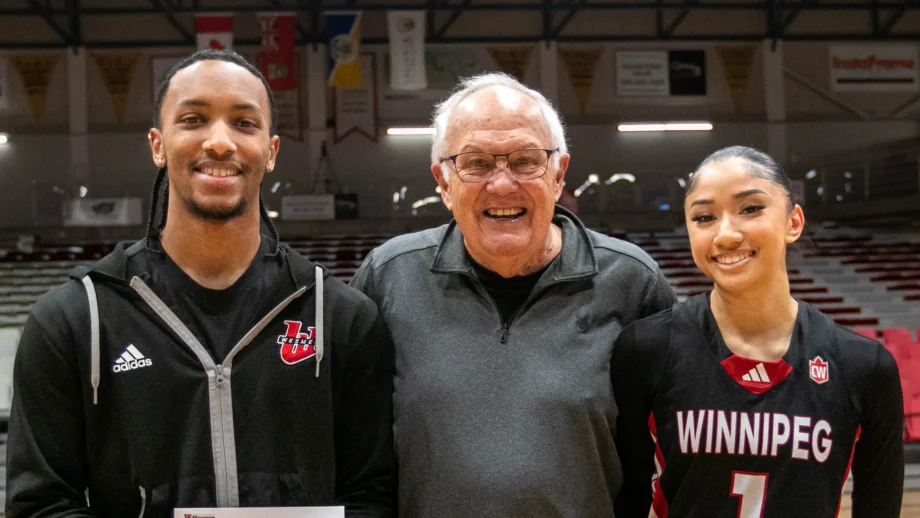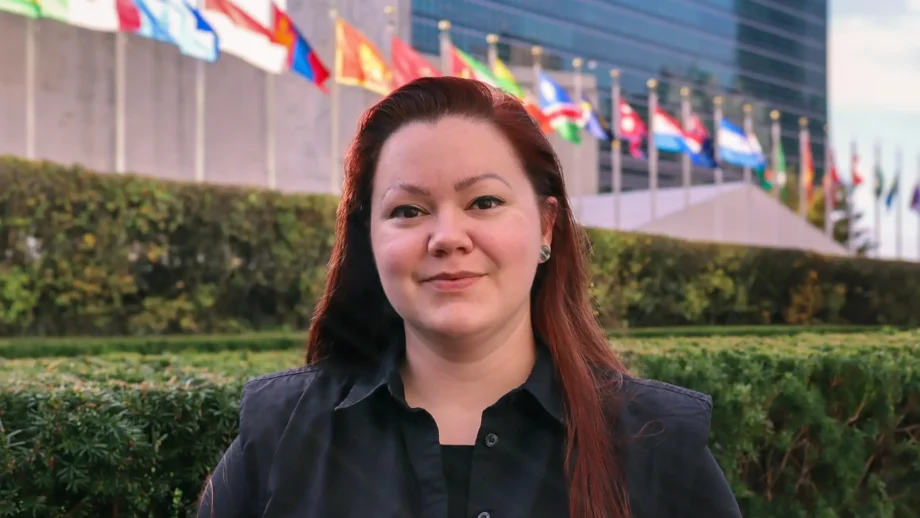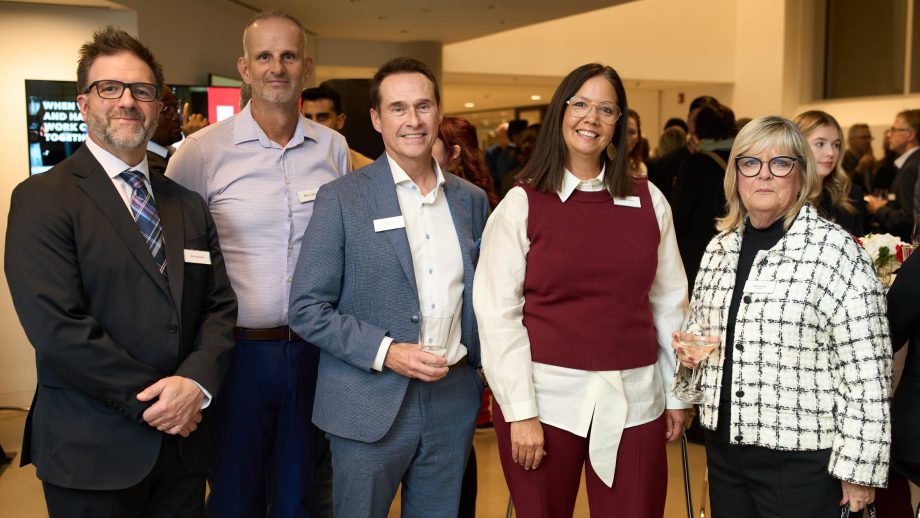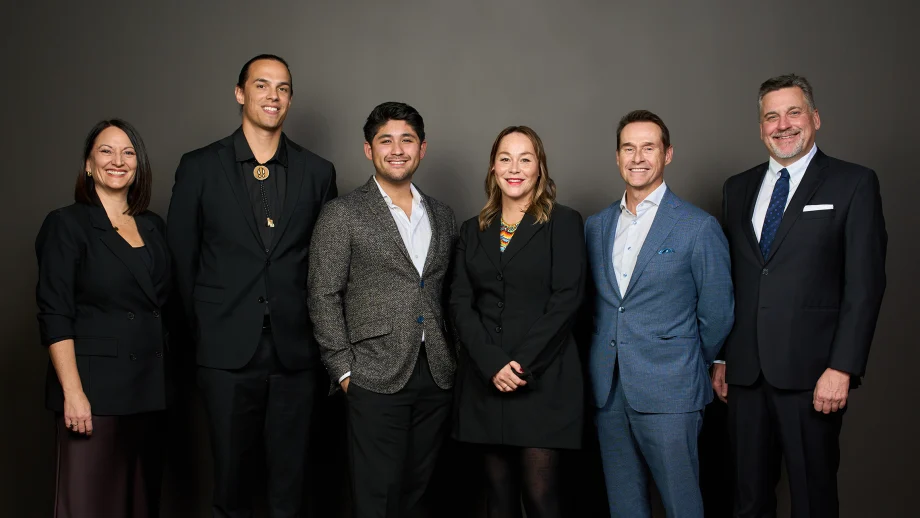“It is important to be the change you want to see,” says Stacy Cardigan Smith (BA 09), an alumna and champion for community and philanthropy. Stacy completed her Bachelor of Arts in Communications after obtaining her diploma in Creative Communications at Red River College. Every experience she’s had, whether as a student, journalist, or philanthropist, has a common thread: relationships are valuable.
As a student at UWinnipeg, Stacy built numerous and long-lasting relationships through her work as the managing editor of the University of Winnipeg student paper, The Uniter. “I loved being able to connect with people who were really passionate about community and their school, and learning and growing,” she said.
However, when Stacy made a pivotal connection with a UWinnipeg professor, little did she know this would help solidify her career. “I took an investigative journalism course with Cecil Rosner, who was the managing editor at CBC, and absolutely loved the class. Once I started to learn more about investigative journalism and how important it is to hold power to account and got into what the narrative spun versus what the data says, I convinced Cecil to hire me on an un-paid internship.”
Stacy ended up working for three years at CBC Manitoba in the communications department and as an investigative reporter and researcher. From CBC, she has dedicated the past 12 years to developing leadership in the non-profit and philanthropic sector with The Winnipeg Foundation. Working her way through various positions, she is now the Manager of Generosity Planning at The Winnipeg Foundation and works with a team to inspire and promote innovative giving options tailored for donors.
Community research partnership with UWinnipeg
Philanthropy and relationship building are not just jobs for Stacy. It is a passion. In 2020, she became the inaugural chair of the South Valour Residents Association (SVRA) in Winnipeg. She has spent the past four years collaboratively initiating, building, and creating strong connections within her community.
When the SVRA was a brand-new association, the board conducted a comprehensive survey of its residents, covering topics from neighbourhood spaces to connections and safety. With an overwhelming 170-plus responses, Stacy reached out to Dr. Julie Chamberlain, an Assistant Professor in Urban and Inner-City Studies at The University of Winnipeg for help.
Dr. Chamberlain joined UWinnipeg in 2021 via Toronto and was looking to get involved with local community participation projects and research. When the two met to discuss the needs of the South Valour Residents Association, and the neighborhood, it was a community research match.
The SVRA board, Stacy, Dr. Chamberlain, and hired research assistant Dagen Perrott began to work together to uncover and disseminate the results. “We wanted to make the data understandable,” said Stacy, “and be able to translate into actionable items for the association.”
Safety is a shared resource. An anti-oppressive approach to safety focuses on how we can all share and collectively experience safety.
Dr. Julie Chamberlain
Focusing on concepts around safety, the group worked to explore anti-oppressive methods to approach community safety. “Safety is a shared resource,” said Dr. Chamberlain. “An anti-oppressive approach to safety focuses on how we can all share and collectively experience safety, rather than using methods that only enhance the security of a select few.”
Dr. Chamberlain said the collaboration was welcoming and engaging. “The SVRA had a pretty clear sense of what their values and goals were. It was a good reciprocal relationship where we had frank conversations about what each of us needed. This has enabled us three years later to still be working together and continue the research ongoing.”
Stacy said the project and work with Dr. Chamberlain had a positive impact on the resident association. “It created an opportunity for participants to be involved in both the research and directing the research. It was great to be able to use a participatory framework.”
Using the findings, Perrott and Dr. Chamberlain released a report, Grassroots & Anti-oppressive Approaches to Safety in 2022. This report discussed six ways to build safety, including nurturing social capital, cultivating good green space, seeing your neighbours, caring responses to crisis, promoting harm reduction, and doing street outreach. Infographics were also created to supplement the findings and help articulate future action items for the SVRA board.
The original report has been used by municipal and provincial governments as a resource to spearhead conversations about safety. “We have been so surprised and delighted that there has been a lot of interest and other neighbourhoods are thinking about this stuff,” said Dr. Chamberlain.
Benefits of community-based research
I think it’s important to know your neighbours,” said Stacy. “To connect with people contributes to a sense of wellbeing. It is important to be involved and support each other to create a community where everyone can contribute in their own way.”
Dr. Chamberlain agrees the research project was successful and brought a lot of people together. “There are so many ways to get involved in research that is relevant and useful for your community,” said Dr. Chamberlain. “If you have a burning topic and question or something that you’re dealing with, there are often academics who would be interested in supporting you to build your knowledge.”
Stacy, Dr. Chamberlain and research assistant Dagen Perrott wrote about their perspectives on the research project in an April 2024 article published in the Engaged Scholar Journal: Community-engage Research, Teaching and Learning.

